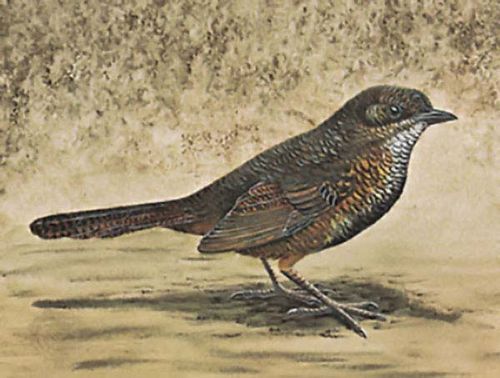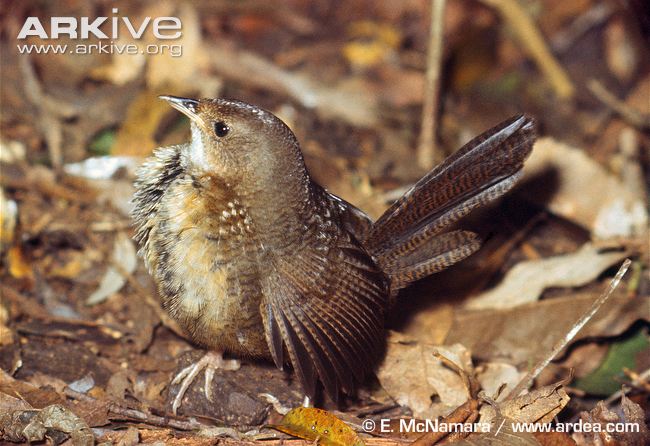
Atrichornis rufescens
TAXONOMY
Atrichia rufescens Ramsay, 1866, New South Wales, Australia.
Two subspecies recognized.
OTHER COMMON NAMES
English: Eastern scrub-bird; French: Atrichorne roux; German:
Rostbauch-Dickichtvogel; Spanish: Achaparrado Rufa.
PHYSICAL
CHARACTERISTICS
Male 7.1 in (18 cm),
female 6.5 in (16.5
cm). Dark rufousbrown
with fine
black barring above,
and buff belly. Male
has black mottling
on throat and breast.
Bill, eyes, and legs
dark brown.
DISTRIBUTION
Central east coast of
Australia (northeastern
New South
Wales and far southeastern Queensland).
HABITAT
Patches of dense ground cover within rainforest or adjacent
moist eucalyptus forest. Now mainly confined to areas above
1,968 ft (600 m) altitude.
BEHAVIOR
Males defend territories using a loud “chipping” song, supplemented
by accomplished mimicry of other species, particularly
when disturbed. Females much less vocal, producing only soft
“ticking” and “squeaking” calls.
FEEDING ECOLOGY AND DIET
Feeds on leaf-litter invertebrates obtained by turning leaves
with the bill and scratching with strong legs and claws.
REPRODUCTIVE BIOLOGY
Breeds September to November. Domed nest constructed
mainly of grass, inside completely lined with cardboardlike
pulp of wood and grass. Clutch size two, but one egg may be
infertile.
CONSERVATION STATUS
Listed as Near Threatened. Total population has declined
markedly since European settlement, mainly due to habitat
loss. Status currently being monitored by annual surveys.
SIGNIFICANCE TO HUMANS
None known.
Photo Gallery of - Rufous scrub-bird




 Animalia Life
Animalia Life